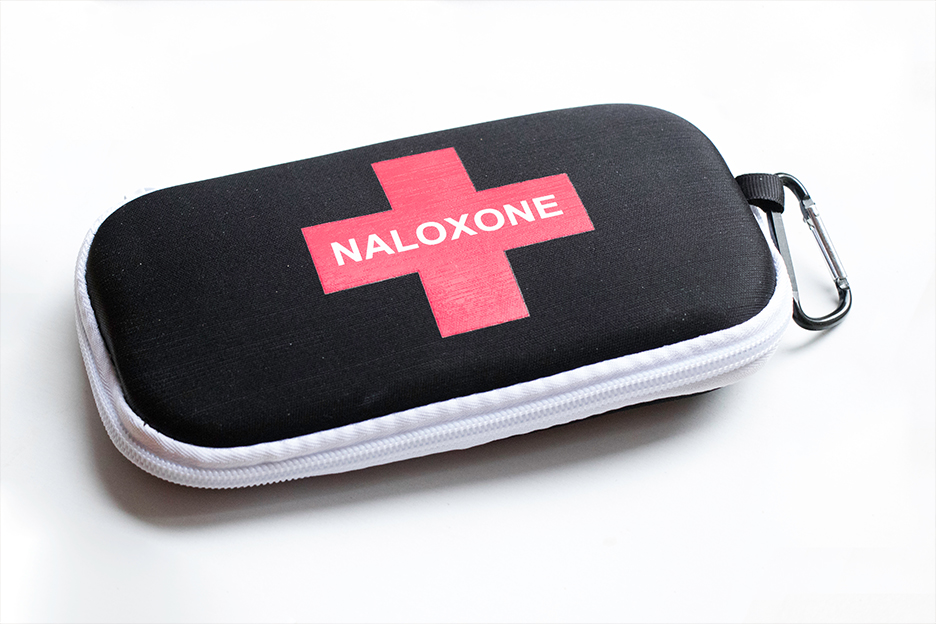All opioid users, whether they take prescription drugs or buy them on the street, are at risk for a potentially fatal overdose. Naloxone is an antidote that is free and accessible to the public, and that can save lives.

What is naloxone used for?
Naloxone is an antidote used to reverse the effects of a suspected intoxication from opioids (also known as narcotics or opiates). This antidote comes in two forms:
- A product that can be injected intramuscularly
- A nasal spray, which is easier to use.
Here are some examples of substances that naloxone can be used to counteract:
- Morphine
- Codeine
- Hydromorphone
- Oxycodone
- Fentanyl
- Heroin
How does naloxone work?
It binds to the same receptors in the brain as narcotics but with a higher affinity to reduce the dangerous effects of an overdose, such as respiratory depression. Naloxone can restore regular respiration within 2 to 5 minutes. However, its use doesn't eliminate the need to get the intoxicated person to the hospital right away: its beneficial effect usually lasts 20 to 90 minutes, which is less than that of most opioids.
Can I hurt someone by administering naloxone?
Naloxone will not cause harm if you give it to someone who appears to be, but is not actually, intoxicated. Furthermore, no medical training is required to safely administer naloxone.
Using naloxone can save an intoxicated person’s life because it increases their survival time until emergency services arrive and take over. Furthermore, it's not addictive. Don't be afraid to use it, no matter how old the person is.
Where can I find naloxone?
In recent years, Canada's provincial governments have expanded access to naloxone. Thus, opioid users and their families can get a naloxone kit at the pharmacy with no doctor's prescription. In addition to the medication, the kit contains a pair of gloves and a mask for carrying out first aid, if necessary.
Naloxone is offered free of charge, along with training, in Québec and several other provinces.
Who should have naloxone at home?
Anyone who is using opiates, whether prescription or black market, should have a naloxone kit - and so should their loved ones. It's important for everyone to understand how to use it in case of an overdose and to know where the naloxone kit is located in the house.
Security guards and street workers should also consider carrying a kit.
When can overdoses occur?
Opioid overdoses occur most frequently when a person who has temporarily reduced their consumption goes back to the original dose. They become more prone to intoxication because they have lost some of their tolerance to the substance.
An overdose can also be caused by an intake error, an accidental or intentional ingestion by a relative or an interaction with:
- Alcohol
- A natural health product
- Another drug (e.g., benzodiazepine for sleep)
In case of street drug use, a change in the source of the product is often the culprit.
How to recognize the signs of an overdose?
If you or a loved one is using an opioid, be on the lookout for warning signs and symptoms such as:
- An extreme urge to sleep
- Very slow breathing or respiratory arrest
- Constricted pupils
- A very slow heart rate
What to do in the event of an overdose?
A person who has taken narcotics who is having difficulty breathing and does not respond to noise or vigorous rubbing of the sternum is probably overdosing.
Stay with them and offer to help. This is a medical emergency.
Here's what you need to do:
- First, call 911 for help.
- Administer naloxone as instructed.
- If necessary, give first aid until help arrives.
- If the person has not woken up after 3 minutes, you may have to administer a second dose of naxolone.
- Stay with the person, reassure them and speak to them calmly.
The Good Samaritan Drug Overdose Act provides some protection to anyone who provides emergency overdose assistance.
Do you need more information about naloxone?
Consult our team of pharmacists nearest you to get answers to your questions.
Related topics
- Our podcast (in French), Les 50 nuances de la douleur
- Opioids: Understanding the risks
- Opioid addiction: Myths and truths